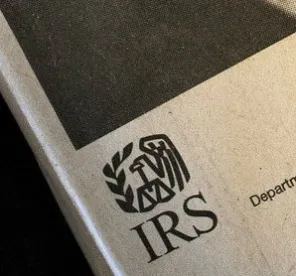The Internal Revenue Service (IRS) recently issued much anticipated proposed regulations that clarify and revise some of the required minimum distribution (RMD) rules for qualified plans (i.e. 401ks, 403bs, etc.) and individual retirement accounts (IRAs). While the proposed regulations are subject to further action in the late Spring of 2022, they contain a few important potential changes for both spouse and non-spouse beneficiaries.
Many of the proposed distribution rules depend, in part, on whether the account owner died before or after the applicable required beginning date for distributions. Under the SECURE Act, this was increased to age 72.
The following describes a few of the many rules proposed by the IRS:
Spousal Beneficiaries
If the spouse of the deceased owner is the sole designated beneficiary and elects not to rollover the distribution, then the surviving spouse may take required minimum distributions over the deceased owner’s life expectancy. If the owner died before the owner’s required beginning date, and the spouse is the owner’s sole beneficiary, then the spouse may delay distributions until the end of the calendar year in which the owner would have attained age 72.
If the owner had already attained age 72 then annual distributions are required for all subsequent years; and, the surviving spouse may take distributions over the longer of the spouse’s, or the owner’s, “remaining life expectancy”.
Minor Children as Beneficiaries
The age of majority is now established at age 21; some commentators had previously speculated that this age could be as high as 26. If the beneficiary is a minor child, annual distributions are required using the minor child’s life expectancy. Annual distributions continue after the minor child has attained age 21, and the account must be fully distributed within ten years of the minor child attaining age 21.
Adult Children as Beneficiaries (Who are Not Disabled or Chronically Ill)
For many account owners, death occurs after their required beginning date. Under these circumstances, a beneficiary who is an adult child must continue to take annual distributions from the account based on the child’s life expectancy. Furthermore, the account must be entirely distributed within 10 years of the account owner’s death.
Special Rules for Roth IRAs
There continues to be no minimum distributions from a Roth IRA while the account owner is alive. Following the death of a Roth IRA owner, the required minimum distribution rules apply to the Roth IRA as though the Roth IRA owner died before the applicable required beginning date. If the sole beneficiary is the Roth IRA owner’s surviving spouse, then the surviving spouse may delay distributions until the Roth IRA owner would have attained his or her required beginning date.
Conclusion
The foregoing are a few of the many rules proposed by the Internal Revenue service regarding the distribution of qualified retirement accounts and IRAs. Please keep in mind that the rules are currently subject to comment and revision by the IRS.





 />i
/>i

